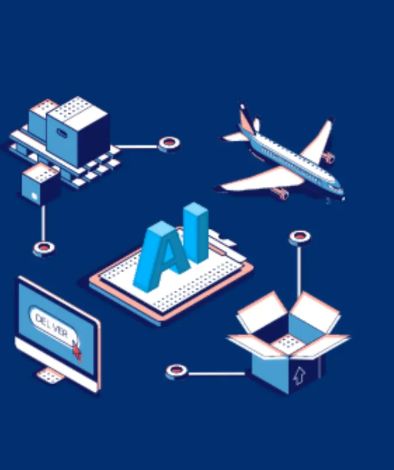7 Ways AI-Driven Demand Forecasting is Revolutionizing Business Success

In today’s highly competitive business environment, demand forecasting has become a critical tool for success. The ability to accurately predict consumer demand can significantly impact inventory management, production planning, and overall profitability. While traditional forecasting methods have been used for years, they often fall short in handling the complexities of modern markets. Artificial Intelligence (AI) is now playing a pivotal role in transforming how businesses forecast demand. With AI, companies are shifting from reactive to proactive strategies, allowing them to stay ahead of the curve and optimize operations more effectively.
1. Enhanced Accuracy: The Power of AI in Demand Forecasting
Accuracy is at the heart of any successful demand forecasting strategy. Traditional methods, which rely on historical data and manual analysis, often struggle to account for sudden changes in the market, such as new product launches or unpredictable consumer behavior. AI solves this problem by processing large volumes of data from a variety of sources, such as sales figures, customer behaviors, market trends, and even external factors like weather patterns or economic indicators.
AI’s ability to learn continuously from new data allows it to improve over time. Machine learning algorithms can identify subtle patterns and correlations that human analysts might miss. This enables businesses to generate highly accurate forecasts, helping them avoid issues like overstocking or stockouts and optimizing their supply chains for greater efficiency.
2. Real-Time Insights: Immediate Data Analysis
The ability to make quick decisions based on the most up-to-date data is invaluable in today’s fast-paced business world. Traditional forecasting models often rely on past data, which can become outdated by the time it is used for decision-making. This delay can result in missed opportunities or delayed responses to emerging trends.
AI-driven demand forecasting provides real-time insights, allowing businesses to act immediately on new data. By continuously analyzing incoming information, AI systems can adjust forecasts on the fly, enabling businesses to respond swiftly to market changes. For example, during peak shopping seasons, AI can quickly detect shifts in demand for specific products and alert businesses to adjust inventory levels or marketing efforts in real-time.
3. Cost Reduction: Improving Resource Efficiency
AI-powered demand forecasting helps businesses optimize resource allocation, leading to significant cost savings. Traditional methods often lead to overproduction or underproduction, both of which come with financial drawbacks. Overproduction can result in excess inventory that ties up capital and incurs storage costs, while underproduction can lead to missed sales and customer dissatisfaction.
AI minimizes these risks by providing more accurate forecasts, allowing businesses to better align their production schedules with actual demand. This reduces unnecessary production runs and helps to streamline inventory management. Additionally, by automating the entire forecasting process, AI reduces the need for manual data collection and analysis, saving time and minimizing human error.
4. Data-Driven Decision-Making: Making Informed Choices
AI enhances the decision-making process by providing businesses with valuable insights that go beyond simple predictions. By analyzing various factors such as pricing, promotional campaigns, or market conditions, AI models can predict how these variables will impact future demand. This enables businesses to make more informed decisions on everything from inventory management to marketing strategies.
AI also uncovers trends that might not be immediately visible to human analysts. For example, it may discover that demand for a particular product increases during specific weather conditions or that promotions on social media drive higher sales. These insights help businesses take a more strategic approach to product launches, promotions, and customer engagement, ultimately leading to better outcomes and a stronger market position.
5. Scalability: Adapting to Business Growth
As businesses grow, their demand forecasting needs become more complex. Traditional methods often struggle to scale effectively, requiring more personnel and resources to handle larger datasets. In contrast, AI systems are highly scalable, making them ideal for growing businesses.
AI can process large amounts of data from multiple sources without losing performance, allowing businesses to expand their operations into new markets, product lines, or geographies. Furthermore, AI can handle increasingly complex forecasting models that take into account multiple factors like seasonality, economic conditions, and consumer preferences, ensuring that predictions remain accurate even as the business scales.
6. Risk Mitigation: Predicting and Managing Potential Risks
AI not only helps businesses forecast demand more accurately but also plays a key role in risk management. By analyzing data from a variety of sources, AI can detect early signs of potential threats, such as supply chain disruptions, economic downturns, or shifts in consumer behavior. This allows businesses to take proactive measures to mitigate these risks before they escalate.
For example, AI could flag a downturn in demand based on economic indicators and suggest adjusting inventory levels or diversifying suppliers. It also helps businesses manage risks associated with new product launches by forecasting potential demand and providing insights into market conditions that could affect success.
7. Gaining a Competitive Edge: Staying Ahead of the Curve
In a competitive market, staying ahead of the competition is crucial. AI-driven demand forecasting provides businesses with the tools to do just that. By delivering more accurate and timely forecasts, AI enables companies to anticipate market trends and consumer preferences before they become widely recognized.
For example, AI can analyze data from social media and customer feedback to spot emerging trends, giving businesses the opportunity to position themselves as market leaders. This proactive approach allows companies to adjust production schedules, inventory levels, and marketing strategies quickly, ensuring they are always aligned with consumer demands.
Moreover, by reducing the likelihood of stockouts or overstocking, AI helps businesses improve customer satisfaction, strengthen brand loyalty, and boost long-term success.
Conclusion
Incorporating AI into demand forecasting offers businesses a host of advantages, from enhanced accuracy and real-time insights to cost savings and improved decision-making. As AI continues to evolve, its ability to optimize forecasting will become even more critical for businesses looking to maintain a competitive edge in the marketplace. By leveraging AI for demand forecasting, companies can streamline operations, reduce risks, and position themselves for success in an increasingly dynamic environment.




